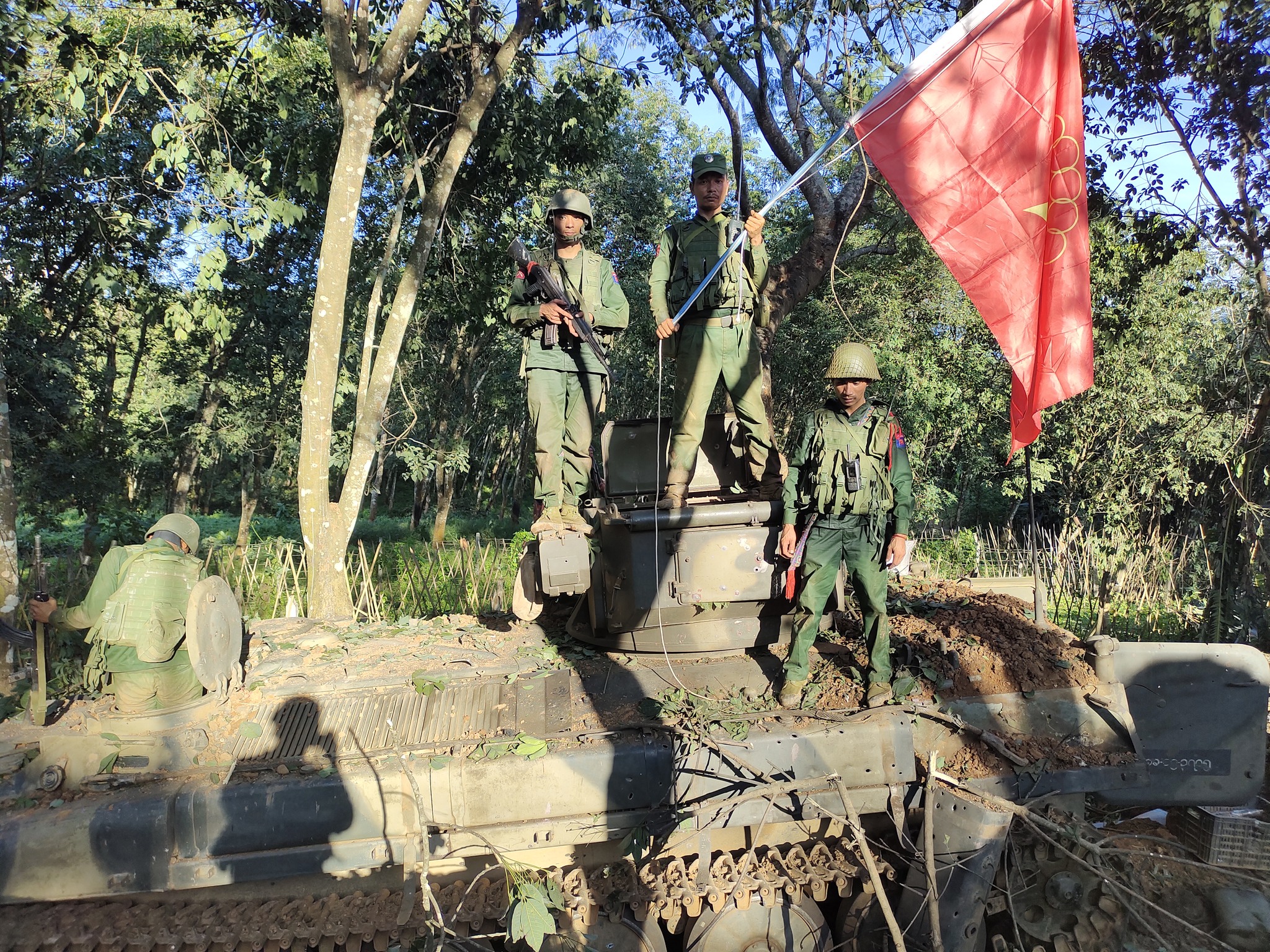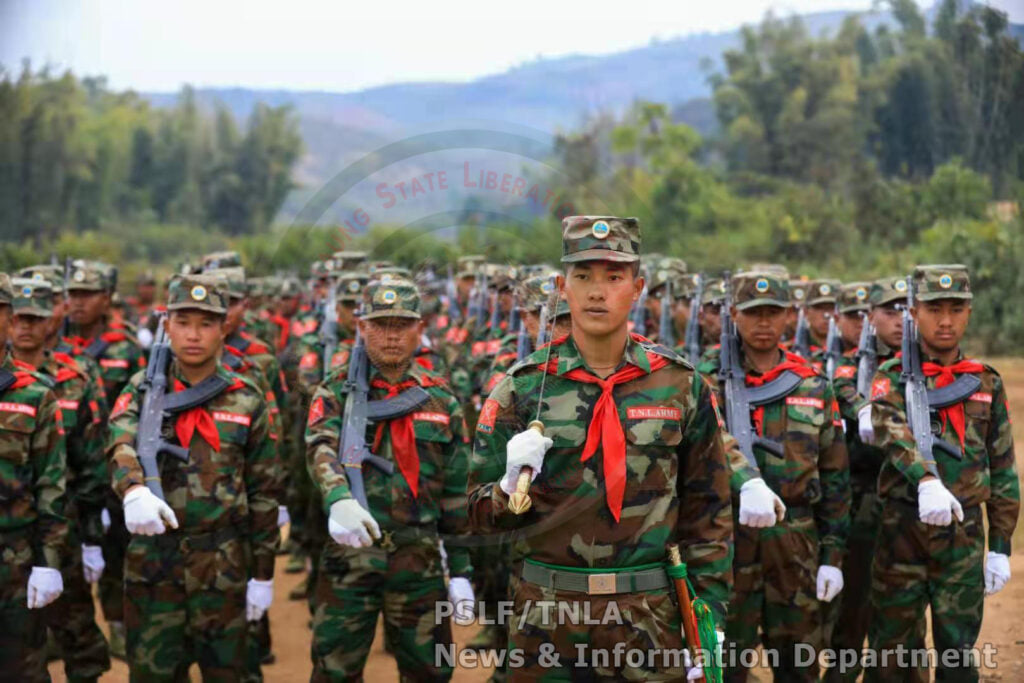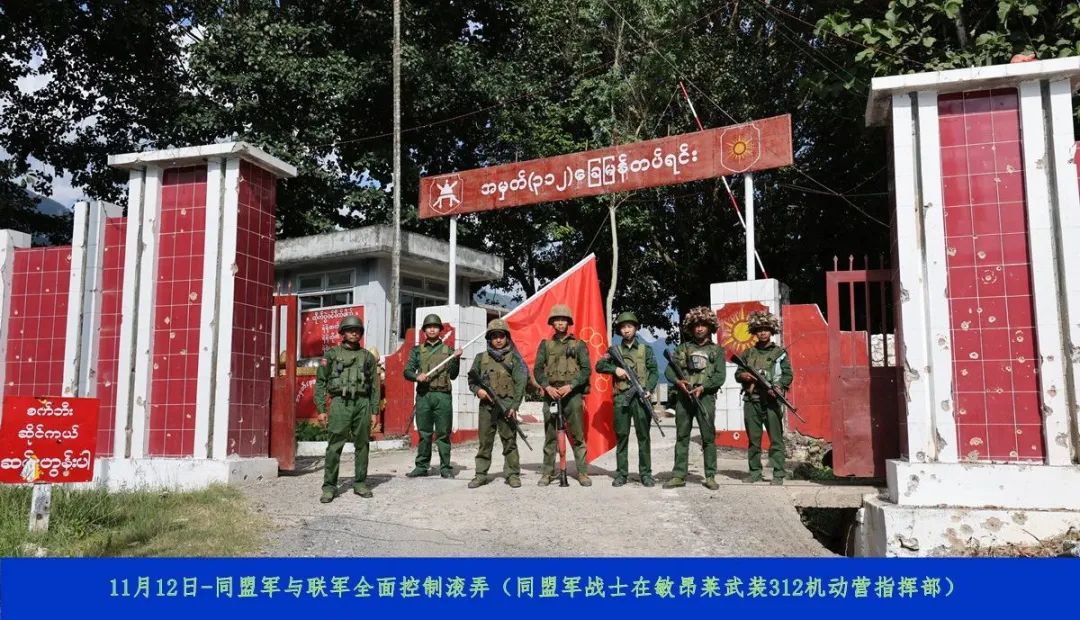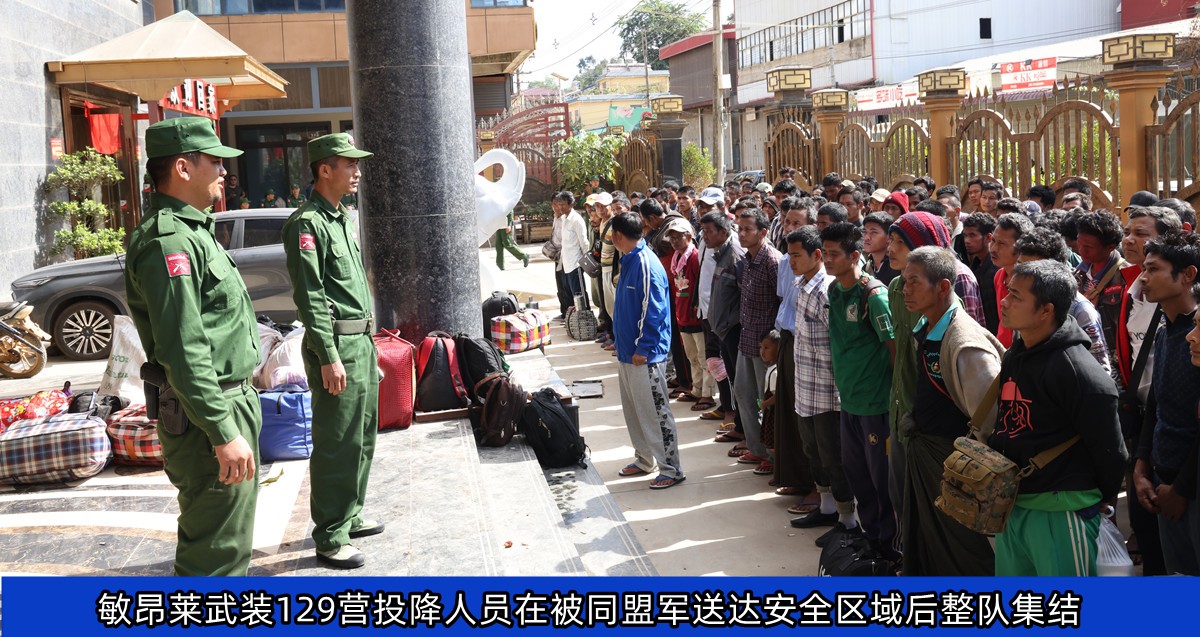Monday marks one month since the Myanmar military regime was confronted with what has rapidly become the biggest challenge to its rule since the 2021 coup—a massive, coordinated resistance offensive dubbed Operation 1027 that has inflicted significant troop and territorial losses on the junta.
The tripartite Brotherhood Alliance comprising the ethnic Rakhine armed group the Arakan Army (AA), the Ta’ang National Liberation Army (TNLA) and the Myanmar National Democratic Alliance Army (MNDAA), jointly launched the anti-regime operation by attacking and seizing regime bases and towns across northern Shan, Kachin and Rakhine states and the upper reaches of Sagaing and Mandalay regions.
Several resistance organizations including the People’s Defense Force groups (PDFs) under the civilian National Unity Government (NUG), the Karenni Nationalities Defense Force (KNDF), and one of the country’s most powerful ethnic armed organizations (EAOs), the Kachin Independence Army (KIA), are coordinating with the Brotherhood Alliance’s operation.
Drawing on an estimated 20,000 resistance fighters, the operation is the biggest, best-organized offensive mounted against the military regime since the coup.

The alliance has achieved significant successes, attacking and seizing a large number of junta bases in a short period of time and, in the process, winning popular support across Myanmar, whose people have endured great hardship under military rule.
Within a month, over 224 junta bases and seven towns across northern Shan, including some strategic centers on key Myanmar-China trade routes, have been seized from the junta.
Since the operation’s launch, the resistance groups have managed to block many sections of two of the country’s main trade arteries—the Mandalay-Lashio-Muse road and the Mandalay-Lashio-Chin Shwe Haw road, both of which pass through northern Shan State.
In the earliest days of the operation, the rebel groups managed to take complete control of Chin Shwe Haw, a trade hub on the Chinese border. Later, they seized another strategic town, Hseni, where the Lashio-Muse and Lashio-Chin Shwe Haw trade routes converge, as well as another trade gate—Kyin San Kyawt on the China border in Muse Township.

After attacking several junta bases including major military headquarters for 12 days, the resistance groups on Nov. 12 took complete control of Kunlong, a town of vital strategic importance to the junta located on the Lashio-Chin Shwe Haw road that serves as a gateway to the Kokang Self-Administered Zone, also known as Shan Special Region 1.
Resistance groups continue to attack and seize junta bases across northern Shan State. The junta has conducted frequent air strikes and artillery attacks but has so far been unable to retake any of its bases or to send reinforcements into the area.
At the same time, many other resistance groups and EAOs have stepped up attacks on regime targets and bases in harmony with Operation 1027.
In Chin State, ethnic Chin resistance groups including the Chin National Army (CNA), the armed wing of the Chin National Front (CNF), have stepped up attacks on regime targets and bases in Falam and Tedim, and took complete control of the town of Rihkawdar in Falam Township on the Indian border on Nov. 13. They also seized Lailenpi town in Matupi Township last Friday.
In the first week of November, a joint force comprising troops from the KIA, AA, PDFs and Chin resistance groups took control of Khampat and Kawlin town in Sagaing Region after several days of clashes with regime forces.
On Nov. 11, in harmony with Operation 1027, the Karenni Army, Karenni National People’s Liberation Front, KNDF and PDF groups jointly launched another massive anti-regime offensive, Operation 11.11, attacking and seizing more than 20 junta bases and outposts in Kayah State’s Loikaw and Demoso townships and neighboring Pekon Township in southern Shan State.
In the first 10 days of the operation, over 200 soldiers and at least 45 resistance fighters were killed and dozens of regime troops surrendered to the resistance groups.
Intense clashes continue in Kayah as the joint resistance groups attempt to seize the state capital Loikaw.
Widening Operation 1027, the AA launched attacks on military targets across northern Rakhine State on Nov. 13, ending an informal ceasefire it agreed with the regime a year ago. The AA said it attacked and seized four junta bases and occupied 40 more junta bases abandoned by regime troops who fled fearing resistance attacks.
Fierce fighting continues as the AA attempts to seize Pauktaw town near the Rakhine State capital Sittwe.
As of Nov. 23, nearly 335,000 people in multiple states and regions had been displaced as a result of the escalation of fighting since Oct. 26, said the United Nations Office for the Coordination of Humanitarian Affairs.

The UN’s relief agency also said the fighting and related insecurity had reportedly left almost 200 civilians dead and 263 injured.
The number of civilian casualties is believed to be even higher than the official figure, as more junta artillery and air strikes resulting in injuries and deaths have been reported in northern Shan, Chin and Rakhine states.
In the escalated resistance attacks since Oct. 27, hundreds of junta soldiers have reportedly been killed and it is estimated that over 500, including an entire military battalion of over 200 soldiers and their family members, have surrendered to resistance forces or abandoned their bases.
As the escalation of resistance attacks has spread out across the country, Myanmar’s military regime has been forced to call in 14,000 more combat troops including 4,000 commandos to defend its nerve center Naypyitaw, home to the junta’s ruling generals and their families.
Civil servants in the regime’s administrative capital have been instructed to mobilize as military guards while police stations and bases have been transformed into defense outposts with strong bunkers for use in emergencies.

Besides the intensified resistance operations, the Myanmar junta has continued to face frequent attacks by PDFs and other EAOs in all states and regions of the country, with the exception of Ayeyarwady, since the 2021 coup.
Assessing the impact of the massive, coordinated anti-regime operation, Padoh Saw Taw Nee, the spokesperson of the country’s oldest ethnic rebel group, the Karen National Union (KNU), which has been engaged in fierce fighting against the regime since the 2021 coup, said, “The popular revolt has gained momentum since Operation 1027 was launched. This indicates the end of the military regime.”
He added, “The military regime is doomed.”

















